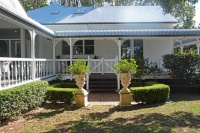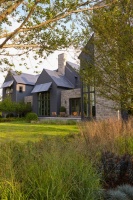6 Rockin’ Red Plants for Winter Gardens
http://decor-ideas.org 01/16/2014 03:24 Decor Ideas
With a little planning, it’s possible to have bold, beautiful red in the garden year-round. What a difference color makes during the colder months, when there’s little to catch the eye. If you’ve made a New Year’s resolution to bring more pizzazz to your outdoor spaces or want to design now for a winter garden next year, here’s my list of top plants with colorful berries or branches for cold climates, along with recommendations for how to use them.
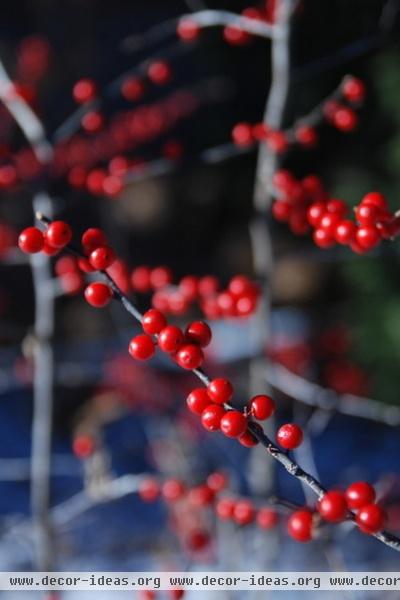
Sparkleberry Winterberry
(Ilex ‘Sparkleberry’)
This cultivar produces bright red fruits that attract birds during winter. Plant with Ilex ‘Apollo’ (the male cultivar) for the best fruit set. Use it as a small tree if space is limited.
Origin: This is the female cultivar of the eastern U.S. native.
Where it will grow: Hardy to -20 degrees Fahrenheit (USDA zones 5 to 9; find your zone)
Water requirement: Medium to wet soil
Light requirement: Full sun to partial shade
Mature size: 5 to 9 feet tall
Benefits and tolerances: Tolerates wet soils; attracts birds
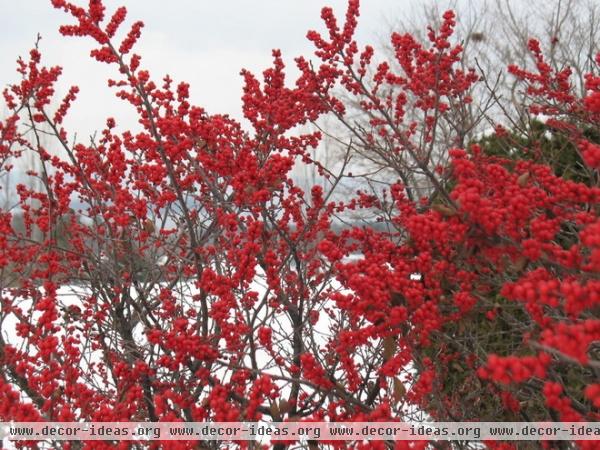
Winter Red Winterberry
(Ilex verticillata ‘Winter Red’)
This is a better selection for gardeners in cold regions — and it’s more compact. The male cultivar for this plant is I. ‘Southern Gentleman’. It makes for an eye-catching border and is very low maintenance.
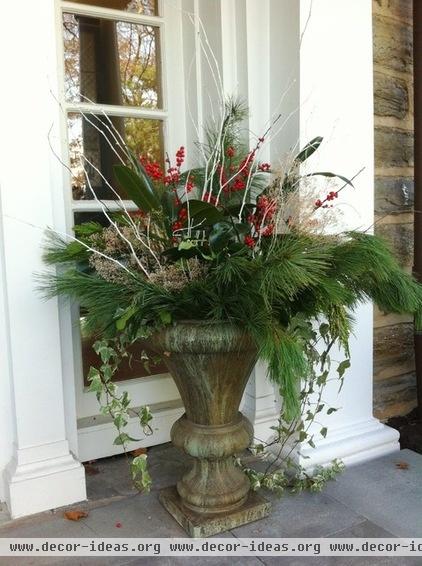
For winter containers branches of winterberry holly look fantastic mixed with pine boughs, fir tips and other evergreens, and they last a long time indoors, too.
In the landscape birds will eat the red berries — watch for robins, cardinals, juncoes, grosbeaks and cedar waxwings.
Origin: This is the female cultivar of the eastern U.S. native.
Where it will grow: Hardy to -40 degrees Fahrenheit (zones 3 to 9)
Water requirement: Medium to wet soil
Light requirement: Full sun to partial shade
Mature size: 6 to 8 feet tall
Benefits and tolerances: Adapted to swamps and wetlands; attracts birds
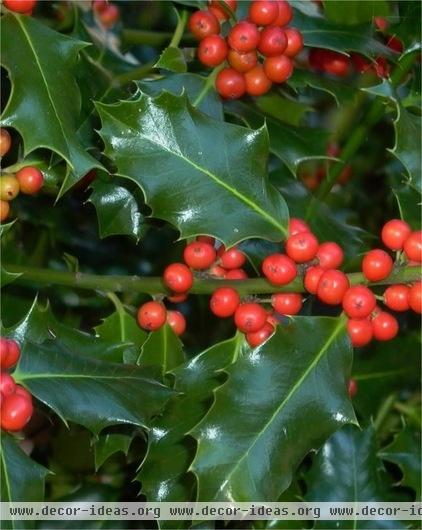
English Holly
(Ilex aquifolium)
There are male and female plants in the species; both flower, but the females produce berries. In the Pacific Northwest, this species is listed as invasive, so check with your local cooperative extension office before you buy.
Origin: Europe
Where it will grow: Hardy to 0 degrees Fahrenheit (zones 7 to 9)
Water requirement: Medium soil
Light requirement: Full sun to partial shade
Mature size: 30 to 50 feet
Benefits and tolerances: Attracts birds; you can shear it to make a hedge
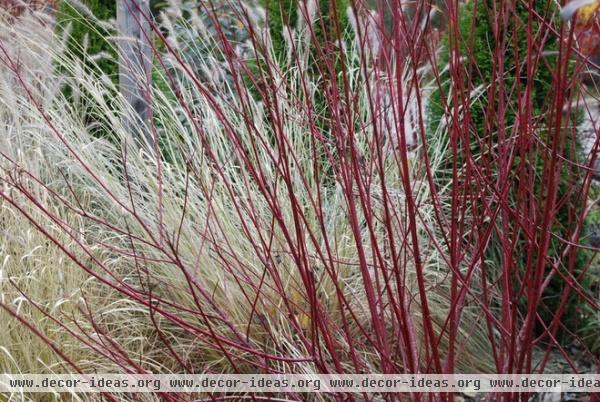
Redtwig Dogwood
(Cornus sericea ‘Baileyi’)
With its colorful branches, redtwig dogwood makes an outstanding focal point in winter, especially when paired with ornamental grasses.
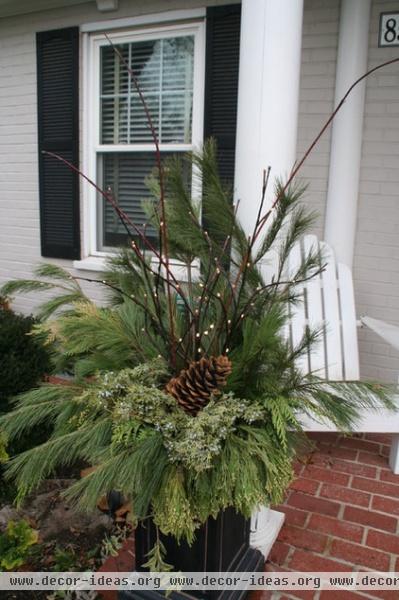
What would a winter container be without a dash of red? I love birch branches, but they are hard to find and break easily. Use redtwig dogwood instead, adding it to your pots by the entry or front porch; the branches can also be trimmed and added to smaller arrangements indoors, too.
Origin: This is a cultivar of the eastern U.S. native.
Where it will grow: Hardy to -40 degrees Fahrenheit (zones 3 to 8)
Water requirement: Medium to wet soil
Light requirement: Full sun
Mature size: 6 to 10 feet tall
Benefits and tolerances: Attracts birds; deer resistant; good for erosion control, as a screen plant and in a rain garden
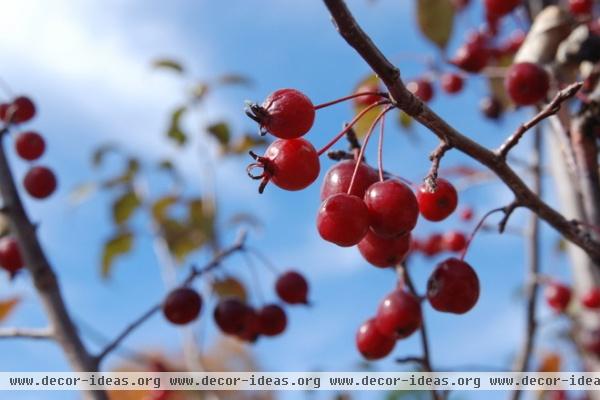
Donald Wyman Crabapple
(Malus ‘Donald Wyman’)
The crabapple tree in my yard is loaded with bright red berries that attract scores of birds, including flocks of cedar waxwings.
Origin: Discovered at Arnold Arboretum at Harvard University
Where it will grow: Hardy to -30 degrees Fahrenheit (zones 4 to 8)
Water requirement: Medium soil
Light requirement: Full sun
Mature size: 20 feet tall and wide
Benefits and tolerances: Spring flowers; the fruit attracts wildlife; has good disease resistance
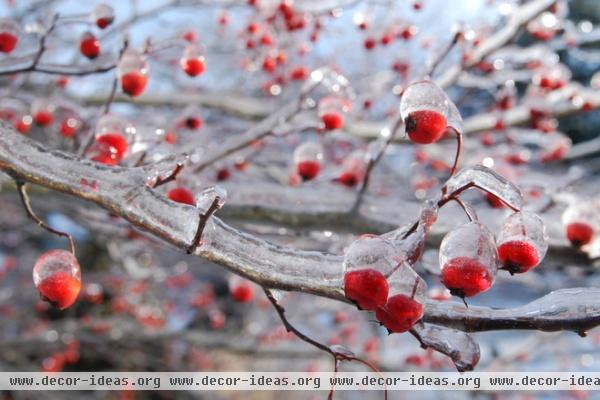
Winter King Hawthorne
(Crataegus viridis ‘Winter King’)
Named a Gold Medal Plant by the Pennsylvania Horticultural Society, this award-winning cultivar is noteworthy for its abundant fruit.
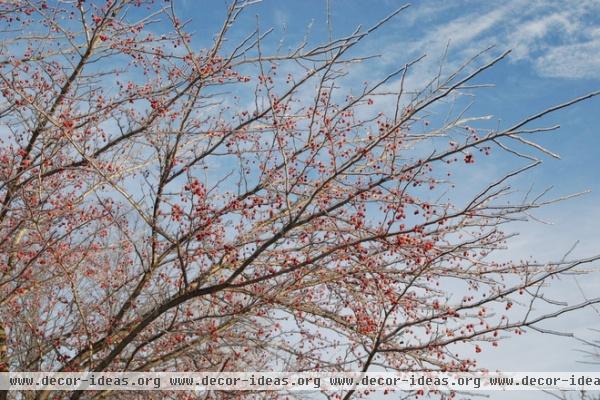
Any tree that looks this good in the middle of winter deserves applause. ‘Winter King’ is in a class of its own with a great form and year-round interest.
There are thorns, but thankfully the tree requires practically no pruning. Interestingly, birds much prefer crabapples and winterberries and leave this fruit on the branch.
Origin: This is a cultivar of the southeastern U.S. native.
Where it will grow: Hardy to -30 degrees Fahrenheit (zones 4 to 7)
Water requirement: Dry to medium soil
Light requirement: Full sun
Mature size: 25 feet tall and wide
Benefits and tolerances: Attractive spring flowers; disease resistant; pollution tolerant
More: Ideas for the winter garden
Related Articles Recommended




